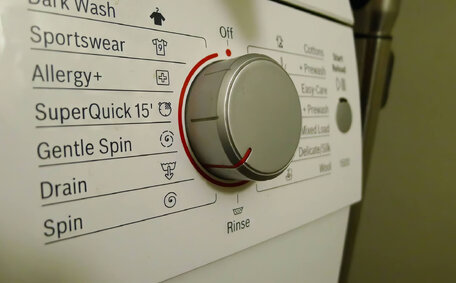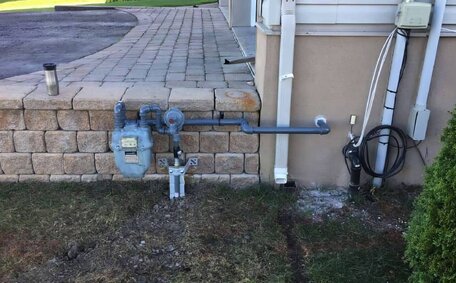Introduction to Direct and Indirect Water Heating Systems
Efficient and reliable hot water systems are essential for Australian homes and businesses. Understanding the differences between direct and indirect water heating systems is key to achieving comfort, energy efficiency, and manageable maintenance costs.
Direct water heaters provide instant heating, eliminating the wait time for hot water. Cold water is passed through a thermal source, such as gas burners or electrical elements, to heat water promptly before flowing from your hot water tap. Tankless or instantaneous systems are types of water heaters recognised for their ability to provide heat directly to water without storage.
Indirect water heaters warm up a reservoir, usually through a furnace or boiler system, before disbursing the heat to your water supply. The water steadily reaches the desired temperature rather than being heated immediately upon request. Indirect heating sources encompass devices like heat pumps, solar thermal panels, boiler coils, and the tankless coil water heater systems.
Choosing the right water heating system in Padstow requires examining factors such as energy efficiency, flow rate, initial and ongoing costs, and system reliability. Direct systems are highly efficient for small-scale use but may not meet the demands of homes with substantial hot water consumption. Despite a higher initial outlay, indirect water heaters provide continuous hot water and better long-term efficiency.
We’ll examine the advantages, costs, and practical effectiveness of direct versus indirect water heating to aid Padstow homeowners and businesses in choosing the most suitable system.
How Direct Water Heating Systems Work
Direct heaters work with their technology to elevate water temperature instantaneously as required, nullifying the need for a storage tank. Cold inlet water flows into the heating unit of the direct heater where it comes into direct contact with a heat source. This process to transfer heat occurs right before the hot water is delivered from the faucet.
Gas-fired heaters and electric heating elements are commonly used sources of direct heat, generating warmth for on-demand water heating. In gas systems, burning natural gas or propane directly heats a chamber or heat exchanger tubes that the water flows through. Electric elements submerged in the water pathway convert electrical current into radiant heat.
Other types of water heaters use that provide direct heating include oil burners, solar thermal collectors with no storage tank, and hybrid heat pump water heaters in tankless mode. The key is that cold water gets hot immediately when passing across the heat source, so no storage or heat retention is involved.
Direct contact with the heat source allows for rapid heating, though this may restrict flow rates, affecting immediate water delivery. Multiple direct heater models can be synced to cater to a higher demand. Indirect water heaters are often more appropriate for homes with high and consistent hot water usage due to their superior capacity.
Smaller direct water heaters can typically deliver around 3-7 litres per minute, while larger, whole-house tankless units may reach up to 38 litres per minute.
Pros of Direct Water Heating
Direct water heaters offer several distinct benefits:
- High efficiency - Direct fired heaters can accomplish nearly perfect efficiency by transforming almost all fuel into usable heat for water. This minimises heat loss compared to systems with storage tanks.
- Affordability - The purchase and installation expenses for whole-house direct heaters are generally lower compared to indirect systems, as they do not require a storage tank.
- Compact size - Tankless direct units take up less space than traditional tank heaters. This allows flexible installation in tight spaces without being enclosed.
- Uninterrupted hot water - Provided the flow rate is sufficient, a direct heater offers a non-stop supply of hot water without the constraints of a storage tank.
- Simple maintenance - Direct water heaters require simplified maintenance due to fewer components and the lack of a tank, avoiding the issues associated with tank deterioration.
- Safety - Without always-hot water storage, direct systems eliminate risks like bacterial growth in stagnant tanks.
Given the benefits of endless hot water, compactness, affordability, and high efficiency, direct water heating stands out as a viable option for many in Padstow.
Limitations of Direct Water Heating
While direct water heating systems have advantages, they also come with some drawbacks to consider:
- Capacity limitations - Smaller models may struggle with high demand scenarios due to the absence of a storage tank.
- Hazardous exhaust - Gas-fired heaters produce carbon monoxide, an odourless gas that requires proper venting.
- Safety hazards - The necessity of contact open flame or electric elements introduces risks and necessitates safety measures.
- Water softener scaling - In areas with hard water, the heating elements of direct heaters frequently need descaling.
- Higher operating costs - Constant reheating can use more energy over time versus well-insulated tanks.
- Ventilation needs - Direct heaters require an air supply and may need air out with outdoor exhaust venting.
- Noise - The combustion process and fans in some units generate noticeable noise.
Although direct water heating solutions provide a continuous hot water supply, factors including energy consumption, limited capacity, and ventilation needs require consideration, particularly in larger residential and commercial environments.
How Indirect Water Heating Systems Work
Indirect water heating systems do not directly heat the water used in your home. Instead, they use an external heat source to warm a heat transfer fluid that is circulated through a storage tank or boiler.
This heat transfer fluid flows through pipes or coils that pass through the water storage tank. As it circulates, it raises the temperature of the water in the tank gradually over time. Common indirect heat sources include:
- Furnace - A boiler or furnace burner heats air or water that circulates through a coil in the water tank.
- Heat pump - Extracts heat from the air or ground to warm refrigerant fluid that flows through the storage tank coil.
- Solar panels - Solar thermal collectors pass heated fluid from solar radiation through heat exchanger technology.
- Electric heating elements - Electric current runs through resistive elements in the tank to heat the water.
This gradual indirect heating method enables domestic hot water to be pre-heated and maintained at a high temperature for prolonged use. The substantial capacity ensures a steady and ready supply of hot water whenever needed. Indirect systems are common for whole-home water heating, but can also include tankless indirect heaters.
While indirect system water heaters may have higher initial costs, they offer advantages such as energy savings, consistent water supply, and compatibility with home comfort systems. Their storage tank functionality provides for both hot water and space heating needs, the system also can avoid the capacity limits of direct heating.
Common indirect heaer heating systems have over direct heaters:
- Energy efficiency - The storage hot water remains insulated, also used as a method to reduce standby heat loss. Heat pumps can channel heat energy at over 300% efficiency.
- Higher capacity - Large tanks connected to your main furnace boiler deliver hot water continuously, even for multiple uses at once.
- Flexibility - Can optimise water use with electricity, gas, solar panels, geothermal coils, etc. as the energy source.
- Integration - Can tap into home heating systems and renewable energy sources.
- Safety - Eliminates the need for open flames or combustible materials within living areas.
- Clean operation - No combustion byproducts or emissions to vent.
- Noise-free operation - Indirect water heaters operate silently without the sound of burning or fan activity.
- Reliability - Time-tested storage tank technology with few repairs needed.
- Aesthetic suitability - With their compact and inconspicuous design, indirect water heaters integrate seamlessly into any setting.
With benefits like energy efficiency, ample indirect hot water capacity, flexible fuel options, safe and quiet operation, and proven reliability, indirect heaters are an excellent choice for many homes and businesses in Padstow.
Drawbacks of Indirect Water Heating
Despite their advantages, indirect water heating systems present some limitations to consider:
- Higher upfront costs - The initial purchase and installation costs for the storage tank and boiler heating system are higher.
- Heat loss - Hot water tanks lose some heat through standby heat loss.
- Bacterial growth - Stagnant hot water can allow bacteria like Legionella to grow in the tank.
- Space needs - Large storage tanks require dedicated utility space.
- Boiler reliance - May require upgrading your heating boiler for optimal performance.
- Longer recovery - It takes more time to reheat depleted tanks of water.
- Scale buildup - Hard water can cause limescale in the heat exchanger over time.
Though indirect water heater systems ensure a substantial continuous hot water supply, the larger size, increased initial cost, maintenance requirements, and dependency on auxiliary heating systems are crucial considerations for home and business owners in Padstow.
Comparing Costs of Water Heating Systems
When selecting a new water heating system, upfront costs and long-term operating expenses are key factors to compare between direct and indirect heaters:
| System Type | Equipment Cost | Installation Cost | Energy Usage | Maintenance |
| Direct (tankless) | $300 - $1500 | $500 - $3000 | Higher | Lower |
| Indirect (tank) | $800 - $3000 | $1500 - $6000 | Lower | Higher |
Direct water heaters boast lower equipment and installation costs, with unit prices ranging from $300 to $1500 and labour costs from $500 to $3000. This can be nearly half the expenditure when compared to indirect tank heaters powered by gas oil sources.
However, the energy usage of direct systems may be higher than indirect water systems in the long run without a storage tank. Persistent reheating may consume much more, tallying 15-45% extra gas or electricity yearly.
Indirect systems are more expensive upfront at $800-$3000 for the tank unit and $1500-$6000 for installation. But their insulation minimises standby heat loss for lower energy usage.
Indirect heaters also require more anode rod replacements and tank flushings over their lifespan. But generally, maintenance costs can remain comparable for a much longer period than expected with both system types.
Although indirect heaters are pricier upfront, their energy efficiency could result in savings that offset the initial costs over a span of 5 to 10 years for numerous households.
Choosing the Right System for Your Home
A primary consideration when choosing a water heating system in Padstow is ensuring the system’s capacity meets your home’s hot water requirements. Smaller homes with 1-2 bathrooms can often satisfy their own hot water needs independently with an electric or gas tankless water heater, which provides an endless supply of hot water on demand.
Larger homes with multiple bathrooms are often better served by an indirect heater, using stored hot water to cater to greater demand. Their capacity ensures more available hot water, delivering it continuously to multiple fixtures at once. Residences already employing gas electric utilities for warmth and culinary pursuits might choose a gas-fired storage tank for optimised efficiency.
Homes with extensive outdoor space can benefit from evacuated tube solar water heating systems, which are well-suited to Padstow’s sunny conditions. Solar thermal systems harness renewable energy while reducing electricity costs. Heat pumps also provide an energy-efficient electric option that can run economically.
Choosing a water heater or tank size matching your daily consumption is key to optimising efficiency tailored to your needs. The specialists at Padstow Plumbing can help offer guidance right up your alley to ensure you make the best choice for your water heater needs. Contact us today to discuss the most suitable and cost-effective hot water system for your home.






